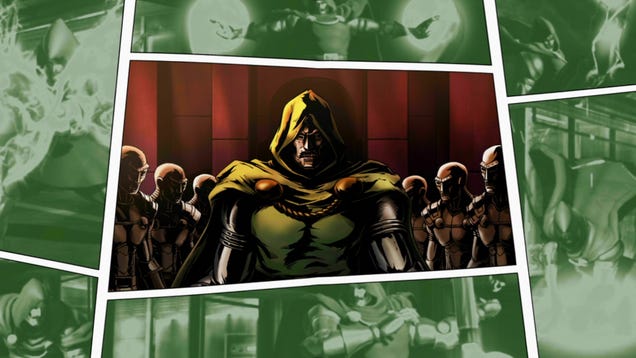
Kazuma Kiryu has been hitting the cigs pretty hard.

“Dune: Part Two” may be delayed, but these three books make for the perfect antidote.

There is an alternate universe where, come Nov. 3, we’d all be seated for Dune: Part Two‘s theatrical run. But Dune: Part Two‘s release has been pushed back to March 15, 2024.
Luckily, there are still several ways to get into the Arrakis spirit while we wait for March. This fall saw the release of three non-fiction books that delve deep into the world and cultural impact of Frank Herbert’s classic science-fiction tome. From examining the places and people Herbert drew inspiration from to a juicy, behind-the-scenes look at David Lynch’s maligned adaptation and more, these books offer something for Dune novices and experts alike.
Here are three books to read if you’re looking for some extra Dune goodness.
For a comprehensive look at all things Dune, look no further than The Spice Must Flow. Ryan Britt charts the entire history of the franchise, beginning with Frank Herbert’s scrapped article about sand dunes and ending with Denis Villeneuve’s 2021 film adaptation. In between, you’ll learn about the writing and publishing process behind each Dune novel, as well as the many proposed Dune films that never saw the light of day.
Perhaps most fascinating here is how Britt lays out just how influential Dune is to sci-fi as a whole. Yes, it’s one of the seminal works of the genre, but several Dune-related connections also led to some of the greatest sci-fi films of all time. How did an unmade Dune movie influence Ridley Scott’s Alien? Or Scott’s involvement in Blade Runner, for that matter? And what did Herbert really think about Star Wars, with it many overt similarities to Dune?
Due to the broad scope of The Spice Must Flow, there’s a lot of fictional and real-world ground to cover. That’s entire decades, not to mention thousands of years’ worth of Dune lore! Still, Britt’s guidance through Dune‘s impact on culture proves assured, especially when coupled with interviews with sci-fi historians, actors and directors, as well as members of Herbert’s own family. The Spice Must Flow takes a daunting wealth of subject matter and makes it an accessible, illuminating read that never lets you get lost in the sands.

Decades before Denis Villeneuve put his spin on Dune, director David Lynch spearheaded the first onscreen adaptation of Herbert’s work. The result, released in 1984, was a critical and commercial flop. Chiefest among its problems was how the film struggled to fit all of Dune into its two-hour runtime, leading to a nearly incoherent narrative.
Yet Lynch’s Dune is not without its bright spots, boasting stunning production design and truly fun (if occasionally broad) performances from stars like Kyle MacLachlan, Patrick Stewart, Sean Young, and Sting. Here is a science-fiction film that isn’t afraid to lean into the bizarre, the outlandish, and the ornate — a deep contrast from Villeneuve’s more austere, brutalist interpretation of Herbert’s work. So, how did this wonderfully strange film come to be? And how did it become doomed to fail?
With his book A Masterpiece in Disarray: David Lynch’s Dune — An Oral History, Max Evry dives deep into every facet of Dune‘s production, assembling interviews with actors like MacLachlan and Young, crew members like casting director Jane Jenkins and costume designer Bob Ringwood, and even Lynch himself. You’ll learn about everything from the challenges the crew faced shooting in Mexico to possible money laundering going on behind the scenes. Movie magic!
Clocking in at over 500 pages long, A Masterpiece in Disarray is a dream come true for anyone who loves or is fascinated by the “black sheep of David Lynch’s filmography,” as Evry calls Dune. The oral history sections are the clear standouts, lending new context and character to some of the film’s strangest bits (like Kenneth McMillan’s Baron Harkonnen). Woven through the entire book is a sense of wonder that this beast of a film got made in the first place, even if it ultimately wasn’t the film Lynch wanted to make. If you’re hungry for a deep dive on the oldest Dune adaptation or just want to take a closer look at this strange stumble in Lynch’s career, A Masterpiece in Disarray is the book for you.

Wonder where Frank Herbert got the ideas for the Bene Gesserit, the Voice, and those sweet, sweet sandworms? The Worlds of Dune by Tom Huddleston seeks to answer all your world-building questions and then some.
Huddleston kicks off our Dune tour on Arrakis before going planet by planet to Caladan, Giedi Prime, and Kaitan. At each stop, he outlines key cultural and geographical aspects of the planet, as well as the real-world inspirations behind them. Some of the inspirations are more obvious, such as Herbert’s use of Arabic words and Islamic theology. Others, like a focus on the field of semantics or anti-Soviet sentiments, are less so, making for some fascinating connections between our world and that of Paul Atreides.
Aside from being well-researched and beautifully printed, complete with illustrations from early editions of Dune and images from the films, The Worlds of Dune is careful to examine Herbert’s legacy. Huddleston pushes back on some of Herbert’s more troubling areas of inspiration, such as the eugenics-based Bene Gesserit breeding program. He also questions whether Herbert’s drawing inspiration from non-white cultures like the San people of the Kalahari Desert or the Quileute tribe of the Pacific Northwest was appropriative, appreciative, or (most likely) a mix of both. Informative and thought-provoking in equal measure, The World of Dune is perfect for people who want a closer look at Dune through religious, historical, and geo-political lenses.


Larian has dropped another colossal patch for its hugely successful Dungeons & Dragons role-playing game, Baldur’s Gate 3, and it brings over 1000 individual fixes and tweaks to the game just as we head into its three-month anniversary.


The Marvel Cinematic Universe is in a weird place right now. Between shake-ups in upper management, Jonathan Majors’ legal trouble following domestic violence charges in March, animators unionizing, and a complete restructuring in how Marvel makes Disney+ shows, the interconnected superhero story has been collapsing…
